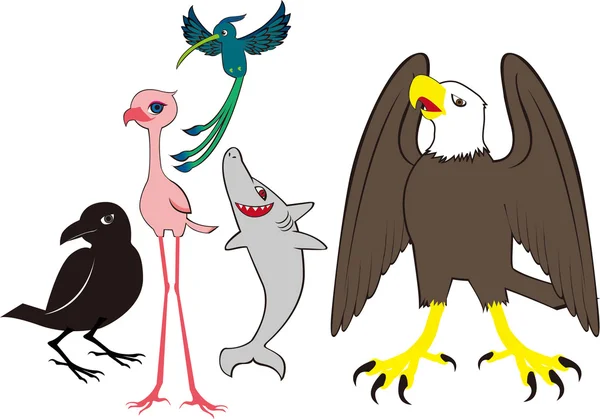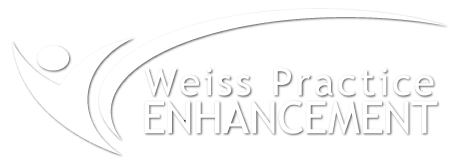Would you describe your dental team as a pack of vultures who swoop in, stir things up and then gleefully pick at the carnage? Or perhaps you have an office of parakeets, who chirp cheerfully all day but don’t actually accomplish anything? I’ve observed dental practices for 25+ years, and I’ve wondered if there is something about workplace culture that transforms reasonable people into snakes, skunks, gorillas and porcupines.
Is there a way to reduce the hissing, puffing and butt heading so that we can work together more peacefully?
Let’s examine two factors that explain why we get so annoyed with the people we work with. The first factor involves our beliefs and expectations about work. The second factor has to do with our own behavioral and psychological preferences. Together, these factors can be described as the myth of professionalism and the myth of teamwork. Finally, I’ll describe the four distinct intentions that fuel our behavior and how they can generate conflict.
The Myth of Professionalism
Despite much experience to the contrary, most of us hold onto the idea that there is an objective code of professional, business behavior. A code can include clothing choice, who you speak to, what you bring for lunch and how you behave at meetings. The problem is that organizations have different codes and since these “rules” are mostly unspoken, an employee might not realize they’ve transgressed until they’re accused of being unprofessional. New employees typically have to learn codes by observation and trial and error. When employees don’t conform, they’re described as not fitting in and the other members of the practice herd, gently or overtly, pressure them to change or leave.
The assumption that individuals can and should be molded to fit into a workplace culture can create confusion and frustration. Team members can simultaneously be victims and victimizers, chafing under the restrictions on their own behavior and yet demanding that their peers scrupulously observe the rules. If you have an employee who energetically informs you when someone is late and others who catalogue the folks who don’t clean up after themselves in the break room, the myth of professionalism is in play. It looks childish but what’s happening is that employees feel outraged that someone isn’t abiding by the invisible rules. In fact, it’s perceived as an injustice if the employee isn’t corrected because it’s not “fair” to everyone else.
The Myth of Team Work
A cynical view about team work is that its only advantage is that you get to share the blame if something goes wrong. Nevertheless, the myth of teamwork proposes that most people want to share and collaborate, that they know how to do so and that a team that works together is smarter and more creative than an individual working alone.
I believe in team work but after facilitating hundreds of dental team meetings, I’ve observed that some employees resent sharing tasks or information, that collaboration is a complicated skill and that a team can absolutely be less effective than an individual. In fact, its been noted that some teams will “kill” off a member who is significantly smarter or more creative than the others.
We’d like to believe that a dental team can be as productive as a bee hive but the reality may be that some teams more resemble a collection of rescue animals with behavioral issues.
The Four Intentions
We operate under conflicting understandings of the myth of professionalism and the myth of team work. But our own personality preferences have a huge impact on why specific people annoy us. For the most part, we view ourselves as paragons of professionalism and reasonable behavior. It’s other people who are irritating nincompoops.
In their book, Dealing with People You Can’t Stand, (McGraw Hill, 2012) Drs. Brinkman & Kirscher suggest people can have four conflicting intentions. At any moment, someone on your team can be oriented towards:
- Getting it right
- Getting it done
- Getting appreciation
- Getting along
Let’s say you have a dental assistant whose personal mission is to get things right and her meticulousness results in her taking 15 minutes to clean an operatory. Your other dental assistant, cognizant of time, just wants to get things done and proudly uses sterilization “shortcuts” to turn rooms over quickly. Meanwhile, your third dental assistant, who wants everyone to get along, covers for her colleagues by apologizing to patients who have to wait or quietly fixing any OSHA problems in the quickly cleaned rooms.
Why Specific People Annoy Us
When we can achieve our intentions and when our intentions are perceived positively, all seems right in the world. But what happens when we’re thwarted or we’re misunderstood?
Recently, I asked a dental team to choose which animal they turn into when they’re frustrated. Their responses were both funny and revealing. There were porcupines, goldfish, cheetahs and even an alligator. Clearly if you have one employee who deals with conflict by swimming away like a goldfish and another who lurks silently to pounce on their prey like an alligator, you have an environment where people can devour each other symbolically.
The key insight into getting along is to understand what other people desire and what they wish to avoid and to adapt your communication to match these preferences.
But in order to understand others, we may have to reduce our judgements about the people who annoy us. This isn’t easy because we get juiced up by self-righteous indignation. We prefer to see ourselves as either infinitely superior or shamefully wronged. The person who annoys us is either a fool or a devil and either way we resent them and the horse they rode in on.
What I like about Brinkman and Kirscher’s model is that it assumes positive intention. There’s nothing evil about a desire for appreciation or wanting to get things done quickly. If you can assume that your most annoying employee has a logical and positive intention behind his or her behavior, you may be less likely to act like an enraged, hungry bear. It doesn’t mean you accept behavior that negatively impacts the practice, it just means you don’t have to react so emotionally.
I’ve done the “which animal best describes you when you’re frustrated” activity dozens of times and it’s a surprisingly effective way for team members to be candid about their own behaviors. They can predict what will happen when one employee who is a self-described ostrich, so uncomfortable with conflict they deny its happening, has a conflict with a colleague who identifies as a skunk and believes in “sharing” their unhappiness with dramatic effect. The conversation is usually marked by laughter but it’s also rich in insights.
It’s inevitable that there will be times when you will feel exceptionally annoyed by the people you work with. Still, conflict isn’t all bad; it can stimulate personal growth and generate energy to force a team to make wiser and more innovative decisions. Finally, the harsh reality is that someone in your practice is probably extremely irritated by you, right now.
Comfort yourself with this thought: the best thing about being less than perfect is the joy it brings to others.




